Beaverhead–Deerlodge National Forest
- February 14, 2024
- 0 comment
Explore Beaverhead-Deerlodge National Forest: vast wilderness, stunning landscapes, and outdoor adventure await in Montana’s largest national forest. Located in the heart of Montana, the Beaverhead-Deerlodge National Forest is a true embodiment of the rugged and majestic wilderness that defines the American West. Spanning over 3.35 million acres, it is not only Montana’s but also one of the nation’s largest national forests, offering an unparalleled backdrop for adventurers and nature lovers alike.

From its soaring peaks and expansive forests to crystal-clear streams and abundant wildlife, this forest is a haven for those seeking solace and adventure in the great outdoors. Whether you’re hiking its scenic trails, fishing in its pristine waters, or exploring its historic sites, the Beaverhead-Deerlodge National Forest invites you to discover the beauty and spirit of Montana’s vast wilderness.
Characterizing Features of Beaverhead–Deerlodge National Forest
- Vast Wilderness Areas: The Beaverhead-Deerlodge National Forest boasts over 3.35 million acres of wilderness, offering untouched landscapes that range from rugged mountain peaks to serene valleys. This vastness provides a sense of solitude and adventure for all who visit.
- Rich Biodiversity: Home to a wide array of wildlife, the forest supports ecosystems that are rich in biodiversity. From majestic elk and deer to the elusive lynx and wolverine, the area is a haven for wildlife enthusiasts.
- Historical Sites: The forest is dotted with historical sites, including ghost towns and remnants of Montana’s mining past. These sites offer a glimpse into the human history that has shaped the region.
- Recreational Opportunities: With hundreds of miles of trails, numerous lakes and streams, and abundant wildlife, Beaverhead-Deerlodge is a premier destination for hiking, fishing, camping, and skiing.
History of Beaverhead–Deerlodge National Forest
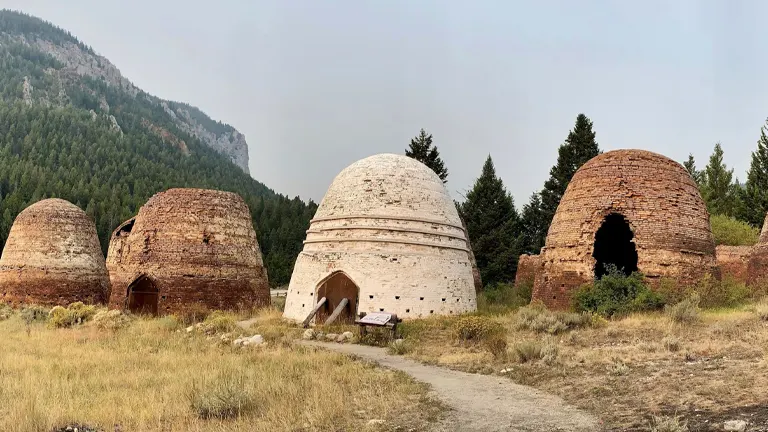
The Beaverhead-Deerlodge National Forest, sprawling across southwestern Montana, boasts a rich tapestry of history that mirrors the broader narrative of the American West. Established in 1908 through the amalgamation of separate national forests, its roots trace back to the era of Native American tribes, who first navigated its rugged landscapes, relying on the abundant resources for their sustenance and culture. The discovery of gold in the 19th century marked a turning point, ushering in a wave of prospectors and settlers that transformed the region. This era of rapid change laid the groundwork for conservation efforts, as the federal government recognized the need to preserve the land’s natural beauty and resources. Over the years, the Beaverhead-Deerlodge has evolved, reflecting shifts in national attitudes towards land management and conservation, balancing recreational use with the imperative to protect its vast wilderness for future generations. Today, it stands not only as Montana’s largest national forest but as a living monument to the complex interplay of natural beauty, resource extraction, and conservation ethics that have shaped the American environmental landscape.
Unique Ecosystem of Beaverhead–Deerlodge National Forest
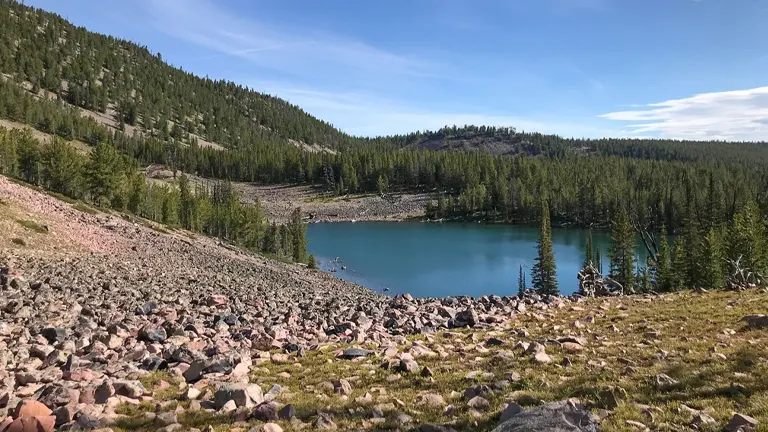
The unique ecosystem of Beaverhead-Deerlodge National Forest is characterized by its diversity, ranging from arid sagebrush flats to high alpine tundra. This variety supports a wide range of plant and animal species, adapted to life at different elevations and in varying climates. The forest’s ecosystems are finely balanced, with each plant and animal playing a role in the health and stability of the environment.
Location of Beaverhead–Deerlodge National Forest
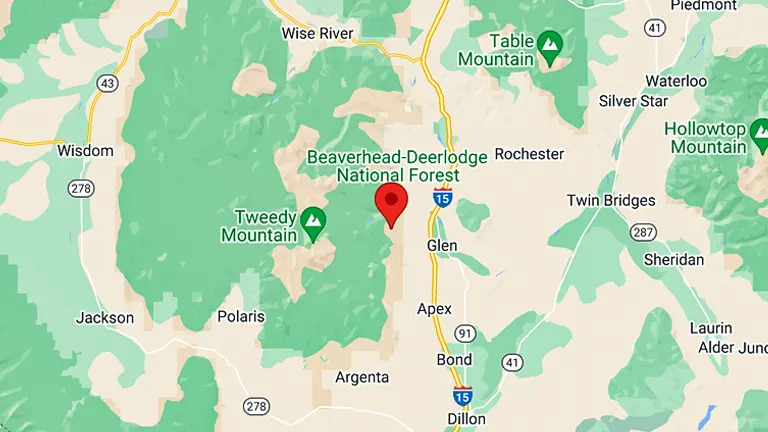
Located in southwestern Montana, Beaverhead-Deerlodge National Forest spans eight counties and is easily accessible from major towns such as Butte, Dillon, and Anaconda. Its vast landscapes stretch from the Idaho border to the Continental Divide, encompassing some of the most scenic and remote areas of the Rocky Mountains.
Here’s a simple guide on how to reach the Beaverhead-Deerlodge National Forest:
- From Butte, Montana: Take I-15 S toward Dillon. Exit for MT-43 if you’re heading towards the Big Hole Valley or continue on I-15 for access to the southern parts of the forest.
- From Missoula, Montana: Drive south on I-90, then take I-15 S towards Dillon. This route offers access to the northern and central sections of the forest.
- From Bozeman, Montana: Head west on I-90, then south on MT-55 towards Twin Bridges, followed by MT-41 into Dillon, providing a scenic route into the heart of the forest.
- From Idaho Falls, Idaho: Travel north on I-15 across the Idaho border into Montana. This interstate provides direct access to the forest’s western edge.
- Using Public Transportation: While direct public transportation to the forest is limited, services such as bus lines and shuttles are available to nearby towns like Butte and Dillon. From these locations, car rentals or local shuttle services can be used to reach specific areas within the forest.
- For Hikers and Backpackers: The Continental Divide National Scenic Trail runs through the forest, accessible from multiple points. Trailheads are best reached by personal vehicle or shuttle services arranged in nearby towns.
- By Air: The nearest major airports are in Bozeman (Gallatin Field Airport) and Missoula (Missoula International Airport). From these airports, car rentals are available to drive to the forest.
Conservation and Recreation in Beaverhead–Deerlodge National Forest

Conservation and recreation go hand in hand in Beaverhead-Deerlodge National Forest. The forest is managed not only to protect its unique ecosystems and wildlife but also to provide recreational opportunities for the public. This dual focus ensures that the forest can be enjoyed by future generations while maintaining its ecological integrity. Recreation, from hiking to fishing, also serves as a way for people to connect with nature and understand the importance of conservation efforts.
Diverse Vegetation and Plant Species in Beaverhead–Deerlodge National Forest
- Ponderosa Pine (Pinus ponderosa): Dominating the forest landscape, these towering trees are essential for wildlife habitat and contribute to the forest’s fire ecology.
- Quaking Aspen (Populus tremuloides): Known for their vibrant fall colors, aspen groves add to the forest’s biodiversity and serve as critical wildlife habitat.
- Lodgepole Pine (Pinus contorta): Often one of the first species to repopulate after a fire, lodgepole pines play a significant role in the forest’s regeneration processes.
- Wildflowers: The forest floor bursts into color with wildflowers like Indian Paintbrush (Castilleja) and Lupine (Lupinus) in the spring and summer, attracting pollinators and adding to the ecosystem’s richness.
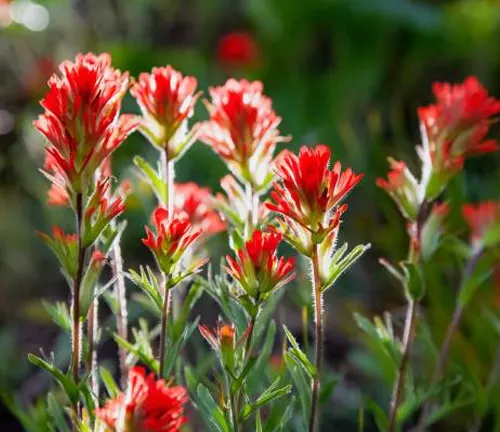
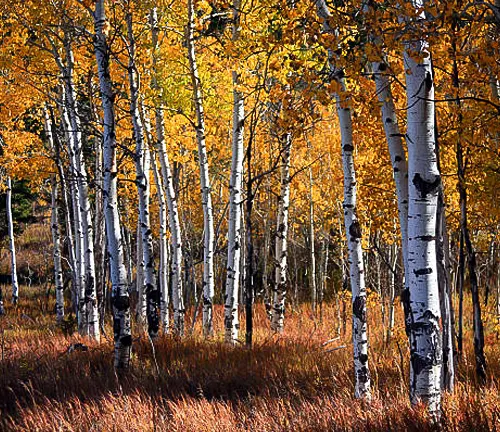
Fauna in Beaverhead–Deerlodge National Forest
- Gray Wolf (Canis lupus): Once nearly extirpated, the gray wolf has made a significant comeback, playing a crucial role in maintaining the health of wildlife populations.
- Grizzly Bear (Ursus arctos): As a symbol of the wilderness, grizzly bears are a focal species for conservation efforts, reflecting the forest’s wildness and ecological integrity.
- Bald Eagle (Haliaeetus leucocephalus): These majestic birds, once endangered, can now be seen soaring above the forest’s rivers and lakes, symbolizing the success of conservation efforts.
- Elk (Cervus canadensis): Large herds of elk roam the forest, especially in the Big Hole Valley, offering spectacular wildlife viewing opportunities.
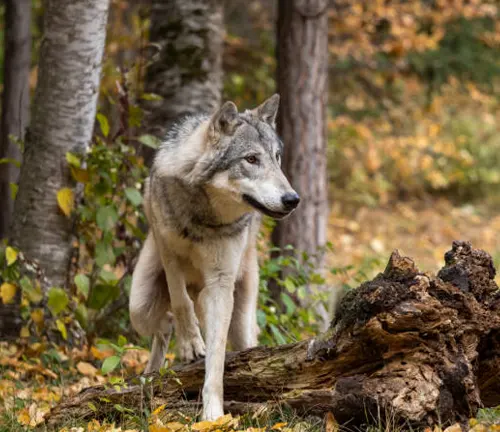
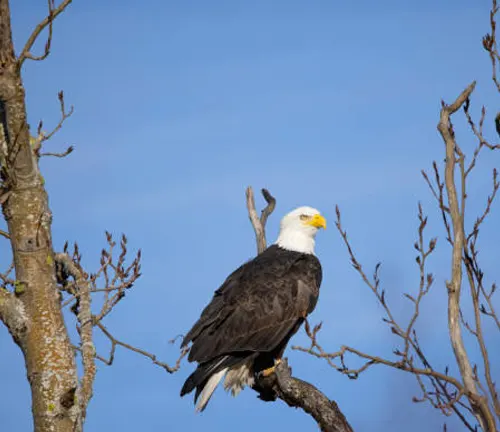
Attractions in Beaverhead–Deerlodge National Forest
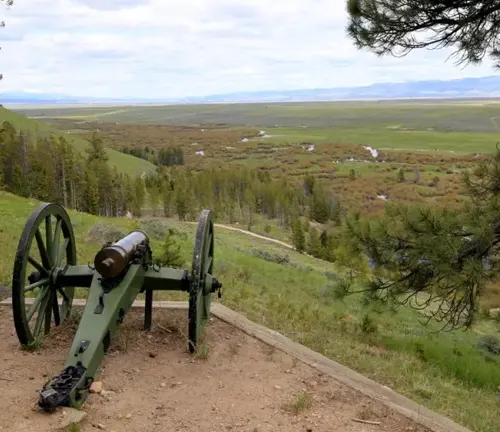
Big Hole National Battlefield: This poignant historical site commemorates the 1877 battle between the Nez Perce tribe and U.S. Army forces. Visitors can explore the battlefield, visit the visitor center to learn about the events and the significant impact on the Nez Perce people, and walk trails that offer both reflection and beautiful views of the surrounding landscape.
Bannack State Park: As the site of Montana’s first major gold discovery in 1862, Bannack State Park transports visitors back to the gold rush era with over 60 preserved log and frame structures. Once a thriving town, Bannack is now a ghost town that offers a glimpse into the past through guided tours, special events, and the chance to explore at your own pace.
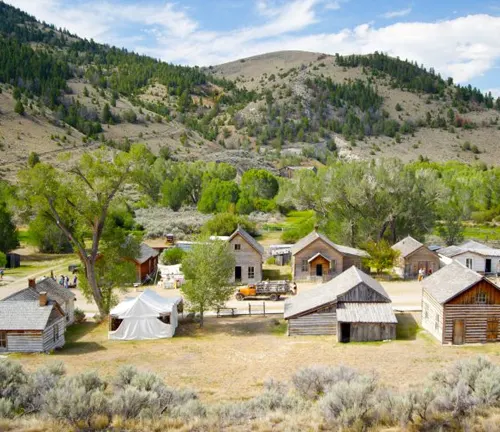
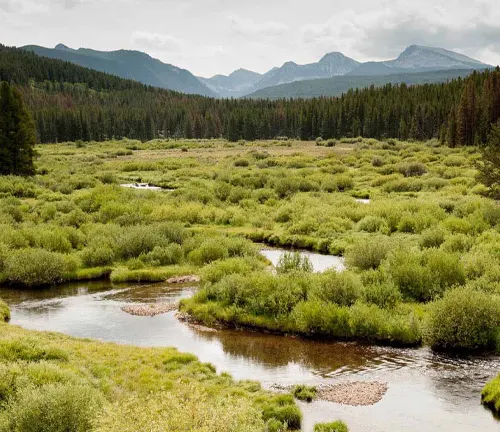
Pioneer Mountains Scenic Byway: Stretching for 49 miles through the heart of the Pioneer Mountains, this scenic byway offers breathtaking views of rugged mountain landscapes, alpine meadows, and crystal-clear streams. It’s a perfect route for photographers, nature lovers, and those seeking a scenic drive through some of Montana’s most beautiful terrain.
Elkhorn Hot Springs: A visit to Elkhorn Hot Springs provides a relaxing retreat in a rustic setting. Just a short drive from the scenic byway, visitors can enjoy soaking in natural hot springs pools, exploring nearby hiking trails, or skiing at the Maverick Mountain ski area during the winter months.
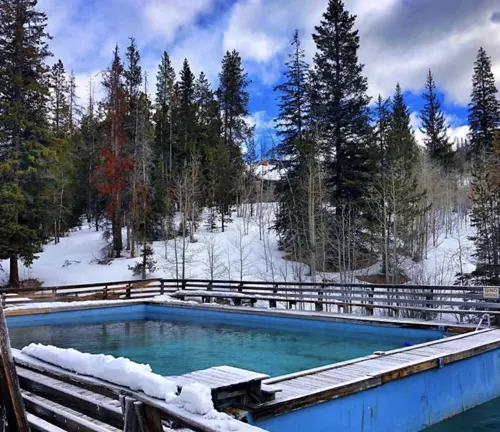
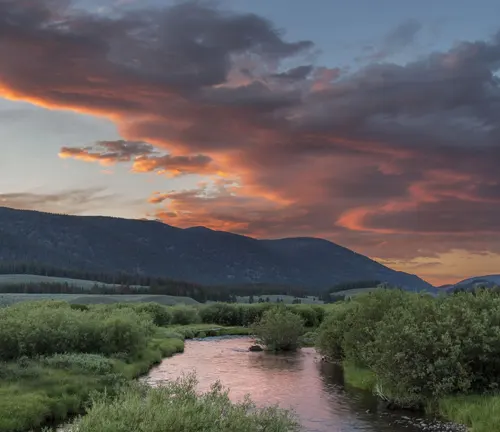
Wise River: Renowned for its excellent fly fishing, the Wise River is a crystal-clear waterway that meanders through picturesque landscapes. Anglers and nature enthusiasts flock to the Wise River for its abundant trout, serene beauty, and the opportunity to enjoy the peacefulness of the forest.
Coolidge Ghost Town: Nestled high in the mountains near the Montana-Idaho border, Coolidge Ghost Town offers a unique look into the area’s mining history. Accessible via a dirt road and a short hike, visitors can explore the remains of this early 20th-century silver mining town, including the impressive ruins of the Elkhorn Mine’s ore processing mill.
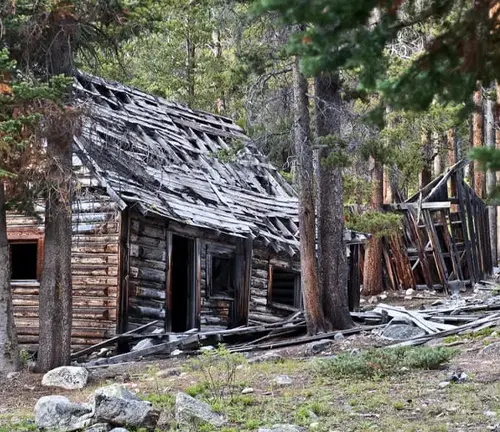
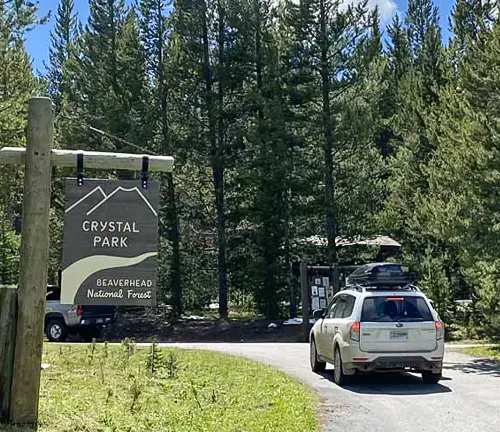
Crystal Park: This unique recreational site allows visitors to dig for quartz crystals. Equipped with a few tools and a bit of patience, anyone can search for and collect these natural treasures. The park’s high elevation and the surrounding views also make it a fantastic spot for picnicking and wildlife viewing.
Recreational Activities in Beaverhead–Deerlodge National Forest
- Hiking and Backpacking: With over 1,200 miles of trails crisscrossing through diverse landscapes, the forest is a hiker’s paradise. Trails range from easy walks through meadows and along streams to challenging treks up rugged peaks. The Continental Divide Trail, which passes through the forest, offers long-distance backpackers a once-in-a-lifetime experience traversing some of North America’s most stunning scenery.
- Fishing: The numerous rivers, streams, and lakes within Beaverhead-Deerlodge are renowned for their excellent fly fishing. Anglers can cast for trout in pristine waters like the Big Hole River, renowned for its blue-ribbon trout fishing, and the Wise River. Whether you’re an experienced fisherman or trying it for the first time, the forest’s waterways offer peaceful and rewarding fishing opportunities.
- Camping: From developed campgrounds with amenities to remote backcountry sites, camping in the Beaverhead-Deerlodge National Forest is an ideal way to immerse yourself in nature. Campers can choose from a variety of settings, including lakeside spots, forested areas, and mountain views, providing a perfect base for exploring the surrounding wilderness.
- Wildlife Viewing and Photography: The forest’s diverse ecosystems are home to a wide range of wildlife, including elk, deer, moose, bears, and many bird species. Wildlife enthusiasts and photographers will find ample opportunities to observe and capture images of these animals in their natural habitats, especially in the early morning or late evening when wildlife is most active.
- Mountain Biking: Certain areas of the forest offer thrilling mountain biking trails that navigate through scenic landscapes. The Pioneer Mountains Scenic Byway, for example, provides access to trails suitable for various skill levels, offering both challenging rides and leisurely paths through beautiful mountain settings.
- Skiing and Snowshoeing: During the winter months, the Beaverhead-Deerlodge National Forest transforms into a snowy wonderland, ideal for cross-country skiing and snowshoeing. The Maverick Mountain Ski Area offers downhill skiing on natural snow, while numerous trails throughout the forest provide serene settings for cross-country skiing and snowshoeing adventures.
- Horseback Riding: Horseback riding is a fantastic way to explore the vast landscapes of the forest. Many trails and open areas are accessible to riders, allowing for a unique perspective of the wilderness. Horse camps and trails like those in the Pioneer Mountains offer equine-friendly facilities and breathtaking rides through high mountain meadows and past historic sites.
- Off-Highway Vehicle (OHV) Use: For those who enjoy motorized recreation, designated areas within the forest allow for OHV use. Trails and roads designated for OHV travel provide a way to explore the more remote areas of the forest, offering adventure and access to stunning views for responsible riders.


Different Facilities and Amenities in Beaverhead–Deerlodge National Forest
- Campgrounds: The forest features numerous campgrounds that cater to a range of camping experiences, from primitive sites to those with more developed amenities like potable water, picnic tables, and fire rings. These campgrounds serve as perfect bases for exploring the surrounding areas, whether you’re interested in hiking, fishing, or simply enjoying the peace of the wilderness.
- Picnic Areas: Scattered throughout the forest are designated picnic areas that provide a relaxing setting for a meal amidst nature. These areas often feature picnic tables, fire pits, and sometimes grills, making them ideal spots for family gatherings or a quiet lunch during your forest adventures.
- Trailheads: Well-marked trailheads offer access to the forest’s extensive network of trails. Many trailheads provide parking areas, information kiosks with maps and local wildlife information, and, in some cases, restroom facilities. They serve as gateways to exploring the diverse landscapes within the forest, from gentle walks along streams to challenging mountain treks.
- Visitor Centers: The forest’s visitor centers are invaluable resources for guests. Staffed by knowledgeable rangers, these centers provide information on trail conditions, camping, permits, and local wildlife. Additionally, they often feature educational exhibits about the forest’s ecology, history, and conservation efforts, enriching the visitor experience.
- Boat Launches: For those interested in exploring the forest’s waterways, several areas offer boat launches. These facilities provide access to lakes and rivers for fishing, canoeing, kayaking, and motorized boating, allowing visitors to enjoy the scenic beauty of the forest from the water.
- Fishing Access Sites: Designated fishing access sites along rivers and lakes are equipped to cater to anglers. These sites often include parking, paths to the water’s edge, and sometimes platforms or docks, making it easier for everyone to enjoy the world-class fishing opportunities the forest offers.
- Dispersed Camping Areas: For those seeking a more solitary or primitive camping experience, the forest offers dispersed camping options. These areas allow for camping outside of designated campgrounds, providing a way to connect with the wilderness more intimately. Visitors are encouraged to follow Leave No Trace principles to minimize their impact on the environment.
- Restroom Facilities: Throughout the forest, especially in developed recreation areas, visitors will find restroom facilities. These range from simple vault toilets in remote areas to more modern facilities near visitor centers and large campgrounds, ensuring comfort and convenience during your visit.
- OHV Trails: For off-highway vehicle enthusiasts, the forest provides designated trails and areas where OHVs are permitted. These trails offer a way to explore the more remote parts of the forest, with facilities including trailhead parking and, in some cases, information boards about responsible OHV use.
Tips and Advice for Visiting Beaverhead–Deerlodge National Forest
- Plan Ahead and Prepare: Before setting out, research the areas you plan to visit within the forest. Check the weather forecast, understand the regulations and permits required, and ensure you have the appropriate gear. Knowing the specifics of your destination, including the availability of facilities and potential hazards, can greatly enhance your experience.
- Respect Wildlife: The forest is home to a diverse array of wildlife. Always observe animals from a safe distance, and never feed or attempt to approach them. Feeding wildlife can alter their natural behaviors and endanger both animals and humans.
- Leave No Trace: Practice Leave No Trace principles to minimize your impact on the environment. This includes packing out all trash, staying on designated trails to avoid damaging native plants, and camping on durable surfaces. Leave natural and cultural objects as you find them for others to enjoy.
- Be Fire Wise: Understand and comply with the forest’s fire regulations. Use established fire rings in campgrounds, never leave a fire unattended, and fully extinguish fires before leaving. Check for fire restrictions before your visit, especially during dry, fire-prone seasons.
- Stay Safe: The forest’s wilderness areas can be remote and challenging. Always let someone know your itinerary and expected return time. Carry a map, compass, or GPS device, as cell service may be unreliable. Be prepared for sudden changes in weather, especially in higher elevations.
- Pack Appropriately: Even for day trips, bring sufficient water, food, and layers of clothing to adapt to changing conditions. For longer excursions, ensure you have a well-thought-out packing list that includes a first aid kit, emergency shelter, and means to purify water.
- Respect Other Visitors: Practice good trail etiquette. Keep noise levels down to allow everyone to enjoy the peace of the wilderness. Yield to uphill hikers and give way to equestrians and mountain bikers as appropriate.
- Travel and Camp on Durable Surfaces: Stick to established trails and campsites to reduce erosion and impact on vegetation. In dispersed camping areas, choose spots that have been used before to avoid damaging pristine sites.
- Dispose of Waste Properly: Use restroom facilities where available. If you’re in a remote area, follow guidelines for burying human waste and pack out toilet paper and hygiene products.
- Be Prepared for Altitude: The forest includes high elevation areas where altitude sickness can be a concern. Acclimatize gradually, stay hydrated, and be aware of the symptoms of altitude sickness.
- Check Road and Trail Conditions: Especially outside of the summer months, roads and trails can be affected by snow, fallen trees, or other obstacles. Check the forest service website or contact local ranger stations for the most current information.
Recommendation
For an unforgettable experience, don’t miss the opportunity to witness the autumn foliage in the Pioneer Mountains. The explosion of colors against the backdrop of rugged peaks is truly a sight to behold.
Conclusion
The Beaverhead-Deerlodge National Forest is a vast and vibrant wilderness that beckons to be explored. Its rich tapestry of ecosystems, history, and recreational opportunities offers something for every visitor. As stewards of this magnificent landscape, it is our responsibility to ensure its preservation for future generations to enjoy. Whether seeking adventure, tranquility, or a deeper connection with nature, the forest welcomes all with open arms.
FAQs
- What is the best time of year to visit Beaverhead-Deerlodge National Forest?
The best time to visit depends on the activities you’re interested in. Summer (June to August) is ideal for hiking, camping, and fishing, while winter (December to February) is perfect for skiing and snowshoeing. - Are there any entry fees for the forest?
No, there are no entry fees for accessing the forest. However, some campgrounds and special areas may require a fee. - Can I bring my dog to the forest?
Yes, dogs are welcome in most areas of the forest but must be kept on a leash in developed recreation areas and campgrounds. - What kind of wildlife might I see in the forest?
Visitors can see a variety of wildlife, including elk, deer, moose, bears, wolves, and numerous bird species. Always view wildlife from a safe distance. - Are there designated camping areas, or can I camp anywhere?
The forest offers both designated campgrounds and the opportunity for dispersed camping in certain areas. Always follow Leave No Trace principles. - Do I need a permit for hiking or backpacking?
Most trails and areas do not require a permit for day hikes or backpacking. However, specific locations may have restrictions, so it’s best to check in advance. - Is fishing allowed in the forest?
Yes, fishing is allowed in many lakes and rivers within the forest. A Montana fishing license is required. - Are there any restrictions on fire usage?
Fire restrictions may be in place depending on current conditions. Always check the latest guidelines and practice safe fire use.
The Beaverhead-Deerlodge National Forest is a vast, beautiful expanse in Montana, offering adventure, tranquility, and a deep connection with nature. As you explore its wonders, remember to tread lightly and cherish every moment in this magnificent wilderness.

Benjamin Brooks
Forestry AuthorGreetings! I'm Benjamin Brooks, and my journey over the past 15 years has revolved around the fascinating realms of content creation, expertise in snow clearing, and the intricate world of lumberjacking and landscaping. What began as a simple curiosity about the natural world and heavy machinery has evolved into a passionate profession where my love for crafting words intertwines seamlessly with my lumberjacking and garden skills.

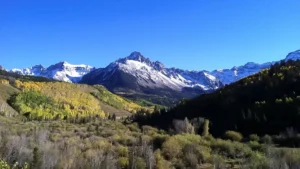
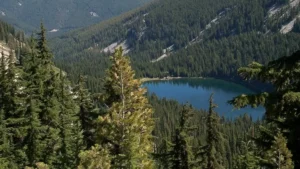
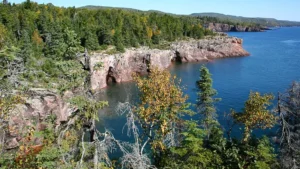
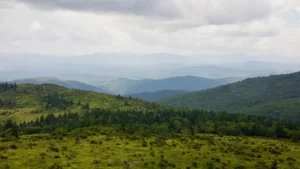

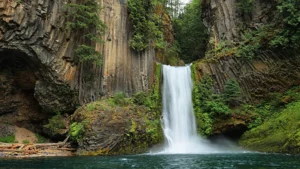
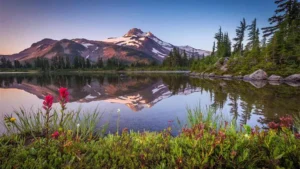
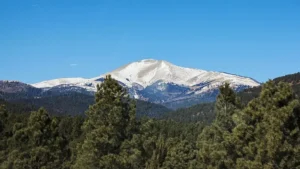
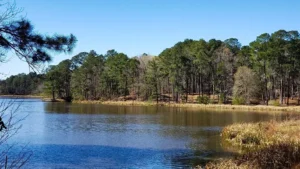
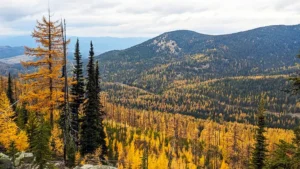

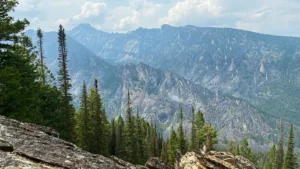
Leave your comment